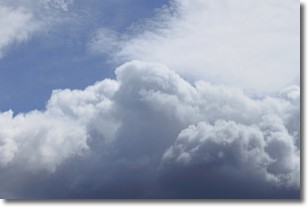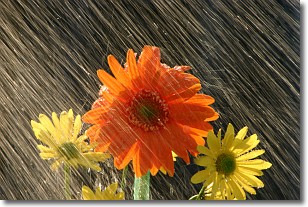Weather Alert in Alaska
Flood Advisory issued June 23 at 12:27PM AKDT until June 25 at 10:00PM AKDT by NWS Juneau AK
AREAS AFFECTED: Haines Borough and Klukwan
DESCRIPTION: A change of pattern through early week will lead to cooler afternoon temperatures and increasing cloud coverage, slowly decreasing the amount of snow and ice melt at higher elevations flowing into the Chilkat River Basin. Water levels will gradually rise and fall on a diurnal pattern. With warm weather subsiding, minor flooding is expected to gradually come to an end near the Chilkat River through Wednesday evening. * WHAT...Flooding caused by snowmelt continues. * WHERE...The Chilkat River near areas around mile post 14 and 24 of the Haines Highway near Klukwan and the Chilkat River Bridge. * WHEN...Until 1000 PM AKDT Wednesday. * IMPACTS...Minor flooding in low-lying areas near the river. * ADDITIONAL DETAILS... - At 1200 PM AKDT, river gauge reports indicate rises in water levels from upper elevation snowmelt across the advisory area. The Chilkat River gauge near Klukwan shows that the stage was at 127.4 ft & near steady as of 12:00 pm Monday. Minor flood stage is 126.0 ft. With warm weather subsiding, minor flooding is expected to continue near the Chilkat River through Wednesday evening. - Law enforcement reported flooding was observed on the North side of Klehini Bridge at Mile Marker 26. High water water levels may also impact the Chilkat Lake Boat Launch. - For Chilkat River at Klukwan: At 12:00 pm the stage was 127.4 feet & near steady Flood Stage is 126 feet. Forecast: A crest of around 127.4 feet is expected Monday afternoon followed by a small drop in water levels Monday evening before rising again to around 127.2 feet Tuesday morning. Impacts: At 126 feet: Bankfull stage. Water will begin to flood backyards along the Chilkat River in the village of Klukwan. At 126.5 feet: Expect flooding of yards and bank erosion near the Jilkaat Kwan Cultural Heritage Center Campus Traditional Knowledge camp in the village of Klukwan. Water will flood lower elevations in backyards along the Chilkat River near Klukwan and start to impact some smokehouse and a river access road. At 127.5 feet: Lower elevations in backyards along the Chilkat River in Klukwan will be underwater, and a river acess road, smokehouses, and storage sheds will flood. Bank erosion is expected to increase near Jikaat Kwan Cultural Heritage Center Campus Traditional Knowledge camp.
INSTRUCTION: Stay tuned to further developments by listening to your local radio, television, or NOAA Weather Radio for further information.
Want more detail? Get the Complete 7 Day and Night Detailed Forecast!
Current U.S. National Radar--Current
The Current National Weather Radar is shown below with a UTC Time (subtract 5 hours from UTC to get Eastern Time).

National Weather Forecast--Current
The Current National Weather Forecast and National Weather Map are shown below.

National Weather Forecast for Tomorrow
Tomorrow National Weather Forecast and Tomorrow National Weather Map are show below.

North America Water Vapor (Moisture)
This map shows recent moisture content over North America. Bright and colored areas show high moisture (ie, clouds); brown indicates very little moisture present; black indicates no moisture.

Weather Topic: What are Nimbostratus Clouds?
Home - Education - Cloud Types - Nimbostratus Clouds
 Next Topic: Precipitation
Next Topic: Precipitation
A nimbostratus cloud is similar to a stratus cloud in its formless,
smooth appearance. However, a nimbostratus cloud is darker than a stratus cloud,
because it is thicker.
Unlike a stratus cloud, a nimbostratus cloud typically brings with it the threat
of moderate to heavy precipitation. In some cases, the precipitation may evaporate
before reaching the ground, a phenomenon known as virga.
Next Topic: Precipitation
Weather Topic: What is Rain?
Home - Education - Precipitation - Rain
 Next Topic: Shelf Clouds
Next Topic: Shelf Clouds
Precipitation in the form of water droplets is called rain.
Rain generally has a tendency to fall with less intensity over a greater period
of time, and when rainfall is more severe it is usually less sustained.
Rain is the most common form of precipitation and happens with greater frequency
depending on the season and regional influences. Cities have been shown to have
an observable effect on rainfall, due to an effect called the urban heat island.
Compared to upwind, monthly rainfall between twenty and forty miles downwind of
cities is 30% greater.
Next Topic: Shelf Clouds
Current conditions powered by WeatherAPI.com




